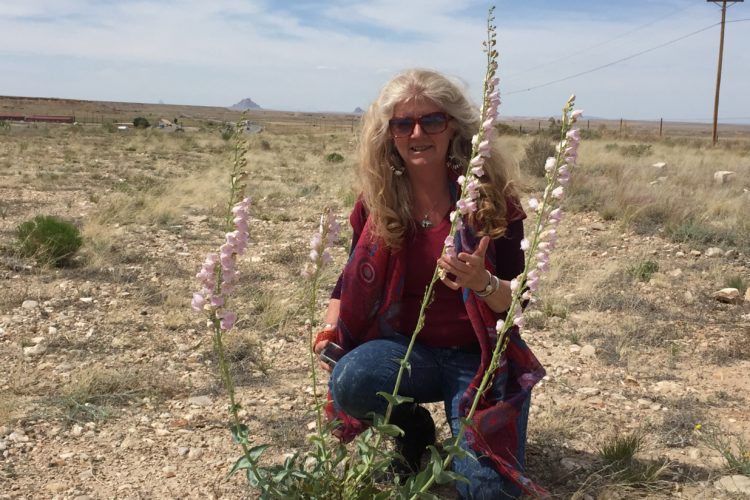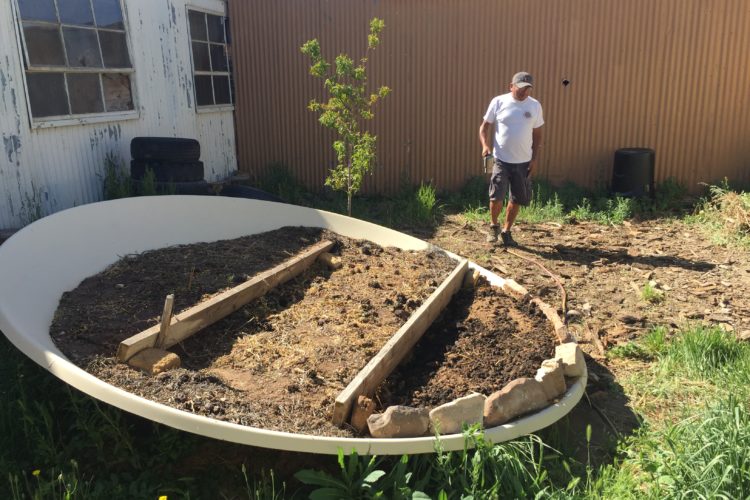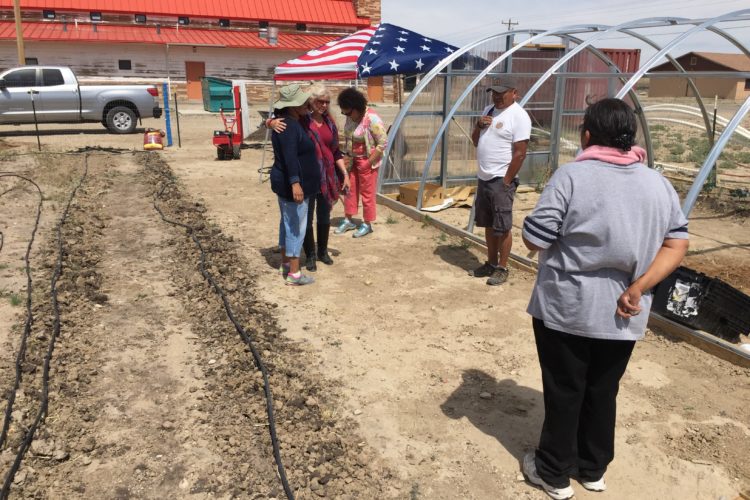We have much more to do and your continued support is needed now more than ever.
NWF Helps Navajo Nation Cultivate Gardens and Cultural Connections

Dust blowing at 50 miles per hour. Feral horses knocking down fences. 100-degree temperatures. No running water within a city block.
These are not the typical components of a gardening program. But those are the issues that members of the Navajo nation face if they want to grow anything on their reservation. If you include the social, economic and health issues tribal members face every day, you wonder how or why anyone would try to garden in such adverse conditions.
Carole Palmer, the Education Coordinator of National Wildlife Federation’s (NWF) Tribal Partnership Program, has spent the last decade thinking about exactly that. Residing near the Arizona-New Mexico border, Carole has tapped into and fortified a network of partners that will re-establish sustainable gardening for the Navajo people. Carole’s approach to this gardening program is shaped by the challenges that confront the Navajo people; and the solutions are uniquely Navajo.

Navajo Way of Life
The Navajo Nation is the largest Native American tribe on the largest American reservation. With 170,000 people occupying 27,000 square miles, the Navajo have been left with a debilitating legacy of unemployment, health issues, substance abuse, crime and economic woes. The remote and rural nature of the vast reservation leaves residents with hours of driving for basic services and a significant lack of infrastructure. These issues obviously dominate the day-to-day needs of the communities, but they do not define the people or the culture.
For a millennia, the Navajo people have carved their culture out of the plateaus and canyons of the Southwest. To the Navajo, like many Native American tribes, a connection with the land, wildlife and nature is a seamless part of their history, culture and spirituality. Therefore, gardening and the integration of nature into people’s everyday lives not only adds benefits such as healthy food, outdoor activity and added beauty, but also re-establishes a connection with nature that is integral to the Navajo way of life.
That is a key reason Carole moved to the Navajo Nation over 12 years ago. The importance of gardening and the benefits that it brings to the Navajo people have always been recognized. But the tremendous day-to-day challenges that people face, combined with the harsh natural environment, present unique challenges that make a gardening program almost impossible.
Almost.
Through a combination of patience, relationship-building, creativity and perseverance, Carole has built a network of partners and champions that are producing real results at Navajo community centers, health clinics, schools and homes. Last month, I was lucky enough to spend a day visiting several garden sites and learning more about the Navajo gardening network. Over eight hours and 250 miles, we visited six sites spread throughout the reservation. The vast distances and dispersed projects illustrated one of the biggest challenges to sustaining a gardening program on the Navajo Nation. But Carole meets that challenge like she does any other, with resilience and commitment. And it is changing things on the ground.
Satellite Dishes and Lasagna Beds

We started our day at the Navajo Fairgrounds where we met with several partners who have been cultivating a demonstration garden to inspire and educate would-be gardeners. The creativity and resourcefulness on display in this garden was impressive: old satellite dishes and tires served as garden beds; wool from local sheep-herders insulated compost heaps; and barrels collected rainwater from the rooftops. With Carole’s leadership, this team is figuring out ways to deal with the harsh climate using available material without major investments.
Few things are more important to gardening in this area than water. That point was driven home when we visited the Dzil Ditl’ooi Charter School in Navajo, New Mexico. Carole is working with the teachers there to make a functional and sustainable school garden. That’s not easy when the only available plot is across the street from the school. The teachers need to run a hose almost 500 feet across the street to water the garden. But Carole is equipping the teachers with techniques that can help the garden to thrive, including plants adapted to the local conditions and strategic garden bed positioning.
At the Sheep Springs Chapter House, where the garden is found ”only” 400 feet from the nearest water, Carole is working with community members to implement ‘lasagna beds’ that layer compost, straw and soil to create more sustainable conditions. To deal with the searing heat, they are experimenting with shade cloth and ventilation systems in greenhouses that would otherwise bake the plants in the summer.
All gardens are also plagued with some sort of pests that can get in and wreak havoc, and the Navajo Nation is no exception. Feral horses are ubiquitous on the reservation and any garden that is going to survive needs a burly fence to exclude the nosy and persistent visitors. ”Horse fencing 101” is yet another skill that Carole teaches to community leaders, along with irrigation systems, composting and a variety of other skills that make Navajo gardening more sustainable.
The importance of Carole’s work and the network that she connects really hit home during a visit to a demonstration garden at the Chinle Indian Health Services Center, which is focused on diabetes prevention through food access and nutrition. While Carole’s expertise is not in diabetes prevention, her support and connections help these agencies to create cost-effective and sustainable projects that have a greater chance of long-term success. The turnover of health care, educational and federal staff on the reservation is incredibly high. Without the sustainable practices that Carole brings to these projects, projects would be much less efficient and most wouldn’t survive beyond a year or two.
Reconnecting With Nature

This ability to connect agencies and partners to the best chances of success is a role that no one else plays on the reservation, and it is quietly creating a gardening program on the Navajo Nation that is making a difference. Through Carole’s commitment, NWF has provided almost a decade of consistency, trial and error, relationship-building and a knowledge of the reservation networks that can only be acquired with time. And the work that Carole is doing with the Navajo Nation is benefiting other tribes in the region, including the Apache and Hopi, who have reached out for training and guidance on sustainable gardening practices.
I’ve been asked why National Wildlife Federation is so active working with the Navajo Nation on gardening that doesn’t necessarily focus on wildlife habitat. After spending the day on the reservation, it is clear that for the Navajo people, connection with nature, whether a vegetable garden or a natural ecosystem, is inherent in their interaction with the world. If we are able to re-connect people to the land, to cultivate plants, to notice pollinators and herbivores, then a visceral connection is re-established. Whether the focus is on vegetable or habitat gardens, NWF’s work on the Navajo Nation is an essential step in uniting all Americans to value wildlife. And I’m excited to help it grow. Get out the horse-proof fences and irrigation hoses, we’re ready to get to work.
Learn more about the great work going on in the Rocky Mountain region.





















